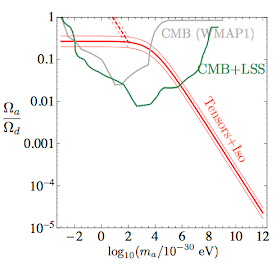There is nothing exotic here: these 4-fermion operators are predicted by the Standard Model, as they are effectively induced by the Z boson exchange between electrons and quarks. Their effect is that left- and right-handed polarized electrons interact differently with quarks. Thus, they lead to different cross sections for left- and right-hand electron scattering on atoms. The left-right asymmetry -- the difference of these two cross section normalized to the sum -- is a convenient observable to measure in a experiment. In fact, the asymmetry was experimentally observed already back in 1978 at SLAC, and at the time it was an important confirmation of the Standard Model structure of weak interactions. Nevertheless, it makes sense to measure the asymmetry (and therefore the parameters Cq) more precisely so as to test the Standard Model predictions. There are two ways new physics could affect this observable. On one hand, the couplings of the Z boson to electrons and/or quarks could be modified, and then the Z boson exchange diagrams would lead to different coefficients Cq than the ones predicted by the Standard Model. On the other hand, new heavy vector boson with mass M interacting with electrons and quarks with strength g would induce contact interactions between the two that would effectively shift the parameter Cq by the amount of order g^2 v^2/M^2.
Now the parameters C1u and C1d have been measured quite precisely, with 3% accuracy, and they agree well with the Standard Model predictions (see here for the most recent update). This can be translated as order 1% constrains on the Z boson couplings to quarks and leptons. It is worth stressing that for the couplings to quarks these are the most stringent constraints to date (better than the ones from LEP) so these experiments are really exploring new territories.
The parameters C2u and C2d are more tricky because, in order to access them in scattering experiments, one needs to resolve the internal structure of the target atom. Here enters the PVDIS experiment at Jlab. They studied the left-right asymmetry of deep-inelastic polarized electron scattering on deuterons. They were able to demonstrate, for the first time, that a particular combination 2 C2u - C2d is non-zero, in agreement with the Standard Model. The resulting constraints on the Z-boson couplings are weaker than those coming from previous experiments. However, since they probe different operators, the provide non-trivial constraints on some new physics, in particular those that produces only C2q and not C1q. The plot reproduced at the top of this post is a more graphic presentation of their results. In the plot, the combined constraints from several low-energy experiments are recast in terms of the scale Λ=Mass/coupling of new physics that contributes to the C1q and C2q coefficients. The yellow and red regions show the new physics reach before and after including the PVDIS results. The exciting thing about the plot is that it explicitly shows these experiments probe the mass scales of order 10 TeV, which is well beyond the reach of the LHC.
Complementary constraints from ATLAS can be found here.











